What if you could pop a pill every morning that that was scientifically proven to increase your energy, improve your mood (combat depression), help rid your body of chronic inflammation and pain, improve brain health, make your mitochondria (your cellular energy generators) bigger and stronger, improve your physical endurance and stamina, and proven to reduce your risk of the major killers in our world (like heart disease and brain diseases) by 40-60%? Oh, and one more thing: Let’s say you could do all that with virtually no negative side effects and only positive side effects?
Sounds pretty incredible, right?
If such a pill existed, it would be prescribed to basically everyone (hundreds of millions of people), and you would be considered literally insane or a total fool if you weren’t taking it. It turns out that something like this exists — it’s just not a pill, it’s a sauna. All of these benefits I just listed off are actually proven benefits of sauna use.
If you ask an average group of people about the benefits of saunas and you might hear things like “weight loss” and “detoxification.” And indeed there is solid evidence that saunas do impact these things. However, the benefits of the sauna go far beyond that…
Regular sauna use has been shown to do everything from improving sports performance to increasing the number of mitochondria in your cells, to improving immune function, to reducing the incidence of Alzheimer’s, and much more.
Below, I give a list of the major benefits of sauna use (along with the science to prove it!), practical tips for using a sauna to get the best results, and my list of the top saunas on the market.
Table of Contents
Hormesis - The Good Stress
How sauna exposure is able to have such amazingly powerful effects on our bodies is largely the result of something called “hyperthermic conditioning,” the changes your body undergoes when it is regularly exposed to “heat stress.”
“Stress? But isn’t stress bad for us?” you might ask…
That leads us to an important point. Before we get into how saunas work to improve our health (from our mitochondria, to our heart, to our brain, and so much more), we need to understand the concept of hormesis (“good stress”). As much as the word “stress” has become associated with all kinds of negative effects, it turns out that – counterintuitively – some types of stress are actually profoundly beneficial to human health. It’s not too far to say that certain types of stress may even be the crux of human health, energy, resilience, resistance to disease, and even longevity. This is called “hormesis,” and it is the principle that certain types of transient stress of our bodies stimulate our biology to make cellular adaptations that make us stronger and healthier.

The most common example of this principle is physical exercise. There is a mountain of thousands of studies showing that exercise prevents all kinds of diseases and that it increases our physical energy levels, improves our mood, and extends longevity. This isn’t because exercise is intrinsically healthy for us – to the contrary, it is because exercise temporarily stresses our cells, and thereby stimulates them to adapt to that stress, which ultimately results in healthier, stronger, more resilient cells.
The great thing about this is that by becoming resistant to one type of stress (say, for example, weight lifting, or jogging five miles regularly), the body doesn’t only become resistant to that type of physical stress – it becomes resistant to a broad spectrum of types of stressors, from processed foods with trans-fats, to psychological stress, to exposure to toxins. This is why we have research showing that it doesn’t just strengthen our muscles and our heart, but that it prevents a huge array of diseases in multiple systems of the body from neurological diseases, to heart disease, to diabetes, to many types of cancer. In short, developing resistance to one type of stress can make your cells resistant to many other types of stress.
Heat stress (i.e. sauna use) is also a type of hormetic stress — like physical exercise stress. And as you’re about to see, much as is the case with exercise, there is a veritable mountain of research showing absolutely incredible benefits of sauna to our health.
I like to say that if there were a pharmaceutical drug that had the same benefits of using a sauna, it would be the best-selling drug of all-time – an absolute blockbuster drug that would be prescribed to basically EVERYONE, and would be hailed as a miracle drug, and one of the biggest medical breakthroughs of all time.
Here’s the cool part: That drug exists. It’s just not a pill made by a pharmaceutical company – it’s a sauna!
With that in mind, let’s explore the amazing health benefits of sauna use…
The Top 22 Science-Backed Health Benefits of Saunas
#1 - Combats Aging and May Increase Longevity
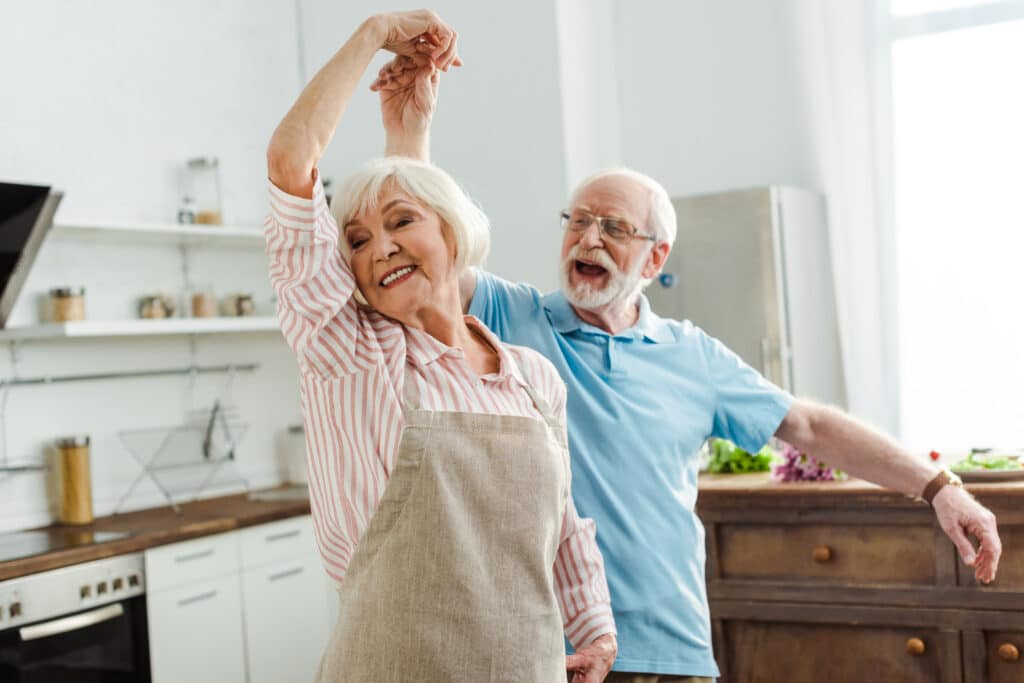
We can start by looking at the benefit of sauna use on longevity since this is the big picture. If a therapy reduces death from all causes, you can be sure that there are multiple mechanisms at work that are enabling this to happen (many of which we will get into in more detail below).
So does using a sauna actually impact on how long we live?
A study out of Finland followed 2,315 men (aged 42-60) for 20 years (studies this long are very rare) and found that those using the sauna 2-3 times per week (as opposed to just one time per week) were a whopping 24% less likely to die from all causes. But there’s even more – the effects continued to increase the more one used the sauna. Those using the sauna 4-7 times per week were an amazing 40% less likely to die from all causes.[2]
(As I said above, if there were a prescription drug that showed effects like this, it would be considered the most incredible pharmaceutical breakthrough of all time.)
One of the mechanisms for this may be the activation of heat shock proteins (HSPs). Aging is associated with a progressive accumulation of molecular damage and reduced cellular defense mechanisms.[3] HSPs can repair damaged cells, promote autophagy (the recycling of damaged cell parts) and also prevent future damage by scavenging free radicals and increasing antioxidant capacity through the maintenance of glutathione, a master antioxidant.[4][5]
Higher levels of HSPs have been linked to longevity, as women with a gene polymorphism that leads to increased expression of HSPs live longer.[6]
This is supported by data that we have in other organisms. Worms exposed to heat stress experienced both greater longevity and protection from frailty in a dose-dependent relationship.[7] As little as one exposure to heat stress in flies and worms can result in up to a 15% increase in lifespan. This has been linked to the effect of HSPs.[8][9][10] While this direct increase in longevity has only been shown in animal studies and hasn’t yet been studied directly in humans, as you’ll see in this article, the human research does indeed link sauna use with disease prevention and longevity benefits — so the human research does line up with these animal studies.
Heat stress also activates FOXO3, which has been called the longevity gene since polymorphisms in this gene are associated with the ability to attain exceptional old age.[11][12]
FOXO3 affects the expression of a number of other genes, such as those involved in DNA repair and cell death, immune function, stress resistance, autophagy, tumor suppression, and the activation of stem cells. [13][14][15][16] These are all critical functions that decline as we age, so a robust activation of FOXO3 via sauna use is a powerful anti-aging strategy!
(Side note: While increased lifespan is one of the many benefits of saunas, there are of course numerous other factors that play a role in longevity. Check out the podcast I did with researcher Jason Prall on the key factors that play a role in longevity. )
#2 - Improves Mitochondrial Health and Energy Production

Heat stress is a powerful type of hormesis, and heat shock proteins (that special type of proteins that are strongly elevated in response to heat exposure) play a big role in improving mitochondrial health and function.
Why is that important?
Simple: Mitochondria are the energy generators in our cells, and our energy/vitality depend directly on their size, power, number, and function.
Moreover, a huge body of emerging research is now pointing to mitochondrial health/function as a major root cause of dozens of chronic diseases and even aging itself. [17][18]
While there are only a few studies testing this directly, heat stress has been shown to induce profound changes in mitochondrial health.[19]
Heat stress (e.g. using a sauna) likely improves mitochondrial health in a number of ways:
- Mitochondrial biogenesis – stimulates the body to make more mitochondria, which means greater capacity to produce energy
- Mitochondrial growth – makes bigger, stronger mitochondria that produce more energy
- Improvements in the Antioxidant Response Element (A.R.E.), the internal anti-oxidant and detoxification system.
- Autophagy and mitophagy – stimulates the cells to recycle and repair damaged mitochondria (think of it like housekeeping and taking the garbage out)
(Side note: If you want to learn more about how to optimize your Mitochondria, I recommend watching/listening to some of our previous podcast episodes: How To Optimize Your Mitochondria To Beat Fatigue and Live to 100 (with Ted Achacoso, MD) and Why Mitochondria Are The Key To How To Overcome Fatigue (And How To Increase Mitochondria) with Dr. Lee Know. And Mitochondria And Fatigue: The Real Cause of Fatigue with Dr. Sarah Myhill.)
#3 - Enhances Detoxification
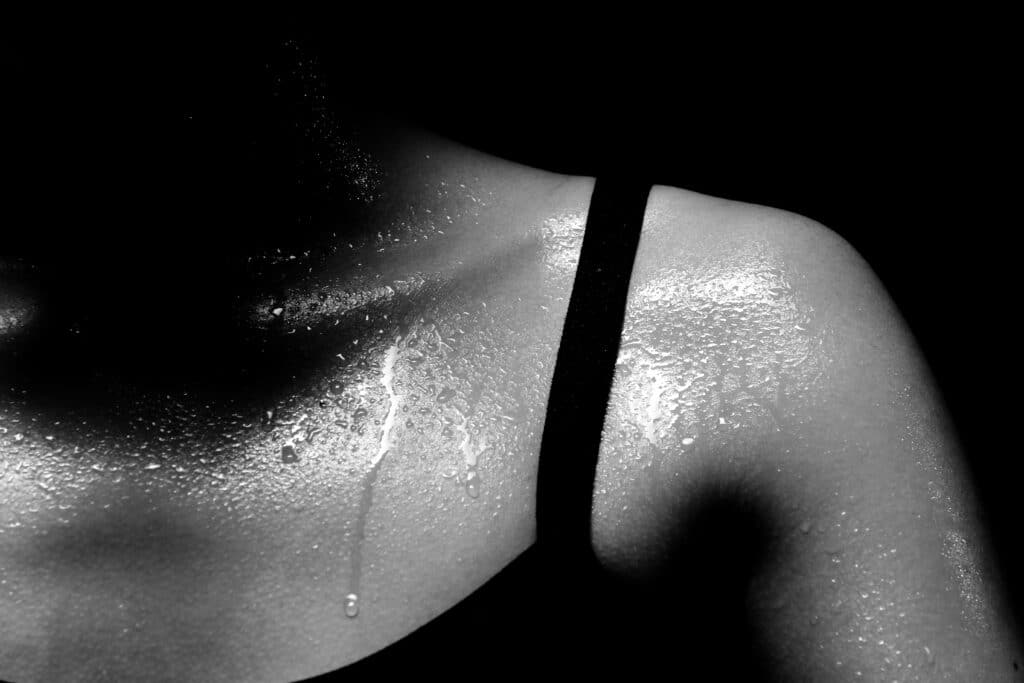
Saunas may also be the single most powerful tool we have for detoxification from environmental chemicals and heavy metals. Sauna use shows real promise for detoxification from heavy metals, PCBs, PBBs, BPA, drugs, and organochlorine pesticides such as DDT (which has been banned for decades but is still ubiquitous).
Many toxicants have long half-lives and bioaccumulate up the food chain, so even if you are avoiding new exposures to the extent possible by cleaning up your immediate environment and being careful about household and personal care products, no one can avoid all exposures and most people likely already have significant stores of toxicants.
In short, even if you’re a health-conscious person who goes out of your way to avoid environmental toxicants, it’s still a safe bet that your body has accumulated some significant burden of nasty chemicals and heavy metals. (And if you haven’t been a health-conscious person who is aware of how to avoid such chemicals, then it’s a safe bet that you have a fairly high body load of accumulated toxicants.) Thus ongoing detoxification is very important.
The ability to sweat seems to be critical for detoxification, [21] and some toxicants, such as certain heavy metals, appear to come out in higher concentrations in sweat than via other excretion pathways such as urine or feces.[22][23] Think about that – when you sweat, you are literally pumping metals like mercury, cadmium, arsenic, and lead out of your body!
Studies have found that we sweat out everything from mercury, to BPA (a hormone-disrupting chemical from plastics), to PCBs, to DDT, to prescription drug residues, to fluoride, to countless other harmful chemicals. Sweating appears to be a major detoxification pathway in humans. And this is extremely problematic because many humans in the modern world don’t live the outdoor, physically active lifestyles of our ancestors (where ample daily sweating was the norm), and thus many modern humans rarely or almost never sweat to a significant degree. So we live in a far more toxic world than our ancestors, and we simultaneously stimulate our sweating detoxification pathway far less than they did – a bad combination indeed.
People with high levels of toxicants often have autonomic dysfunction that affects thermoregulatory mechanisms. Sauna improves autonomic function [24] and consequently thermoregulatory mechanisms, increasing the ability to sweat. People who are heat-acclimated through sauna use can produce up to 2 liters per hour of sweat.[25] The point is that accumulating toxins in your body can literally make it harder for your body to get rid of toxins – creating a vicious cycle. Sauna use helps break that cycle and helps your body re-learn how to detoxify.
Toxicants can be either hydrophilic (water-soluble) or lipophilic (fat-soluble). Sauna can help excrete both, since sweating triggers release from both sweat and sebaceous glands.
Though sweat is an important excretory pathway, it is likely that mechanisms for detoxification go far beyond sweating. These may include the entire array of beneficial adaptations to heat stress, including the repair or removal of damaged cells via HSPs and activation of FOXO3.infus
One study showed a reduction in chemical sensitivity with sauna treatment in addition to graded exercise, daily massage, and nutritional supplementation. At the end of treatment, 86% of participants cleared or markedly reduced their symptom scores. Participants also had overall improvements in mental and physical energy and a reduction in odor sensitivity to toxic substances. After treatment had ended, those who continued to use the sauna three times per week continued to have health improvements and to see their chemical sensitivity diminish. Importantly, however, the authors of this study noted that symptoms could worsen during treatment for those with compromised detoxification pathways. It is critical to take this slowly and make sure the body is able to eliminate the toxins that are being mobilized from tissues.[26]
Sweating has also been demonstrated to increase excretion of toxicants such as organochlorinated pesticides (OCPs),[27] which have been shown to cause mitochondrial damage, oxidative stress, cell death, endocrine disruption, and epigenetic modification.s
In 69 police officers that developed chronic illness as the result of methamphetamine exposure, a sauna-based detoxification protocol led to a significant reduction in symptom and neurotoxicity scores.[28]
Sauna-based treatment of individuals exposed to hexachlorobenzene (HCB) and polybrominated biphenyls (PBBs) led to a remission of symptoms and an average reduction of HCB body burden of 30% at post-treatment and 28% 3 months post-treatment. Mean reduction of polychlorinated biphenyl was 16% at post-treatment and 14% 3 months post-treatment.[29]
Many of the rescue workers following the September 11, 2001 attack on the World Trade Center have developed symptoms from exposure to toxins such as polychlorinated biphenyls (PCBs), polychlorinated dibenzofurans (PCDFs), and polychlorinated dioxins (PCDDs) that have not improved with time. Study subjects reported symptoms including respiratory impairment, mental and emotional distress, chronic muscle and joint pain, gastrointestinal disorders, and skin rashes. Remarkably, after treatment with a sauna-based detoxification protocol, health symptoms either completely resolved or satisfactorily improved, as did neurophysiological test results.[30]
Sauna use may very well be the single most powerful tool for detoxification available.
(Side note: If you want to know more about the importance of saunas (and the best binders for toxins) when detoxing, listen in to the podcasts I have done with heavy metal detox expert Wendy Myers and Dr. Bryan Walsh.)
#4 - Reduces Rates of Heart and Cardiovascular Disease

Sauna bathing is inversely associated with the risk of sudden cardiac death, coronary heart disease (CHD), and cardiovascular disease (CVD) independent of conventional risk factors. A Finnish study (mentioned above) following 2,315 men for 20 years found that the risk of fatal CHD events was 23% lower for 2-3 sauna sessions per week and 48% lower for 4-7 times per week.
Another study following 2,227 men for 26 years found that sauna use was associated with lower risk of cardiovascular mortality independent of cardiorespiratory fitness. That means the sauna was conferring benefits above and beyond exercise alone. The authors concluded that the combination of the two may confer additional survival benefits since those who had high cardiorespiratory fitness and high sauna use (3-7 times per week) had the lowest CVD and all-cause mortality. After adjusting for age, BMI, smoking status, Type II diabetes, cholesterol, current CHD, alcohol consumption, socioeconomic status, and C-reactive protein levels, those with high cardiorespiratory fitness and high sauna use had a 58% lower risk of CVD mortality and a 40% lower risk of all-cause mortality. Adjusted for age alone, the reduction in risk was 73% and 55%, respectively.[34]
Waon therapy, a type of sauna therapy, developed in Japan, has been studied for its effects on heart disease for over 20 years. During Waon, patients are placed in a 60°C infrared sauna for 15 minutes and then kept under warm blankets for 30 minutes thereafter. This is usually done five days per week for a number of weeks or months. A recent review of the literature found that Waon has been shown to improve blood flow, cardiac function, ventricular arrhythmias, vascular endothelial function, neurohormonal factors, sympathetic nervous system function, and symptoms in patients with chronic heart failure (CHF).[35]
Waon has also been found effective for patients with severe peripheral arterial disease (PAD), which often causes severe pain and inability to exercise due to leg claudication.[36][37]
After Waon therapy 5 days per week for 10 weeks, participants with PAD experienced reduced pain and increased exercise performance. Leg ulcers caused by PAD either healed completely or greatly improved, and one patient was even spared from a leg amputation. Results continued in patients engaged in Waon therapy at least twice per week thereafter.[38]
Sauna use improves vascular flow and endothelial function by increasing the expression of endothelial nitric oxide synthase (eNOS).[39] This is important for other lifestyle diseases, too, since people with Type 2 diabetes and obesity also show impaired endothelial function.[40]
Again, the biggest study on the subject ever done showed a 50% decreased risk of dying from cardiovascular vascular disease in those who use a sauna 4-7 times a week. There are few other therapies in existence that show this kind of effect.
#5 - Lowers Blood Pressure

For high blood pressure, even sauna bathing as little as every other week had benefit. A group of hypertensive men using the sauna every two weeks for three months experienced a drop in blood pressure equivalent to that caused by hypertensive medications.[42]
#6 - Increases Weight Loss
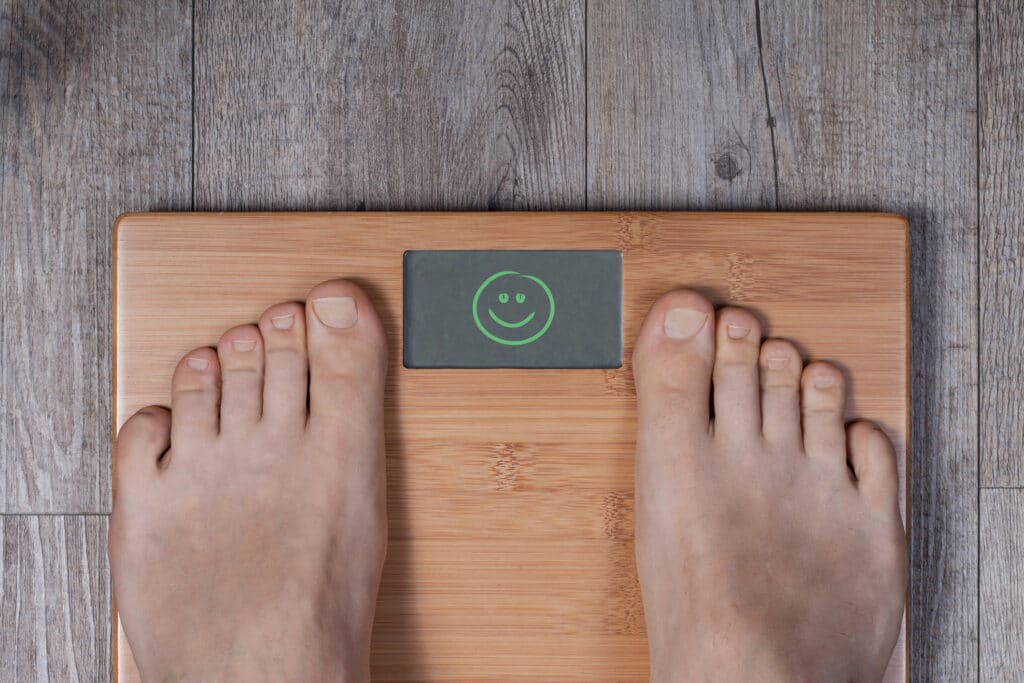
Adding to this, we also have other lines of evidence suggesting a link between HSPs and fat loss. Mice with high expression of HSPs have lower body fat mass, better insulin tolerance and glucose clearance, less intramuscular lipid accumulation, more oxidative enzymes and higher number of mitochondria.[45]
#7 - Increases Physical Performance, Endurance, and Energy

Cardiovascular improvements gained via hyperthermic conditioning – like increased plasma volume, increased red blood cells and blood flow to the heart – improve athletic endurance and performance.[49][50]
Hyperthermic conditioning improves thermoregulatory mechanisms, which means your body stays cooler and performs better at higher temperatures, like those induced during exercise.[53]
Increased blood flow to skeletal muscles improves nutrient delivery, reducing reliance on glycogen stores during exercise. One study noted that heat acclimation reduced glycogen depletion during exercise by 40-50%.[54][55] In other words, sauna use seems to help the body perform exercise more efficiently and with greater ease.
The effects on performance have led some to call sauna use a “performance enhancing drug.”[56]
#8 - Increases Muscle Growth

HSPs repair damaged cells and help prevent future damage by reducing oxidative stress, which is a major cause of muscle degradation. This results in reduced muscle breakdown.[57][58]
Growth hormone increases levels of insulin-like growth factor I (IGF-1), which increases protein synthesis and decreases protein breakdown, resulting in muscle hypertrophy.[61](Note: If you’re a longevity science geek like myself, and you are concerned about a link between GH or IGF-1 and longevity, remember that sauna use profoundly decreases all-cause mortality. So these spikes in these hormones appear to be only beneficial to health and longevity.)
Sauna use also increases insulin sensitivity.[62][63] This results in improved uptake of amino acids into skeletal muscle, enhancing muscle growth. (And results in fewer nutrients ending up in fat cells.)
Studies in rats have shown that heat treatment reduces oxidative stress and protects muscle mass (reduces atrophy) during immobilization,[64][65] and enhances muscle regrowth and reduces oxidative stress during regrowth. In one study this resulted in a 30% increase in muscle regrowth compared to mice not exposed to heat.[66]
#9 - Faster Post-Workout Recovery

Sauna use reduces exercise-induced muscle damage and delayed-onset muscle soreness.[68][69]
Researchers have found that infrared heat improves recovery of the neuromuscular system after maximal endurance performance.[70]
HSPs may protect against rhabdomyolysis, a serious condition caused by excessive muscle breakdown due to overuse which can cause kidney failure.[72] Hyperthermic conditioning leads to higher expression of HSPs under both normal conditions and subsequent exposure to heat, so pre-conditioning is key here.
Sauna use is a potent tool for accelerates recovery in between exercise sessions.
#10 - Promotes Brain Performance, Neuron Repair, and Growth of New Brain Cells

Importantly, low BDNF has been linked with both depression and chronic fatigue syndrome (CFS).[75][76]
BDNF increases from exercise, and this is thought to be a major reason why exercise is linked to improved brain health and protection from neurodegenerative disease.
Other research has shown that sauna use has a huge impact on other hormones like norepinephrine and prolactin, which play roles in focus and attention, as well as promotes nerve myelin growth and nerve repair.[77][78]
Sauna use significantly increases norepinephrine and prolactin levels, which has benefits for mental performance. During sauna, norepinephrine increases 2- to 4-fold, while prolactin increases from 2- to 10-fold.[79][80][81]
Norepinephrine improves focus and attention. Heat stress also increases the capacity of norepinephrine to be stored for later use.[82]
Prolactin promotes myelin growth. Myelin insulates nerve fibers and increases the speed at which nerve impulses are conducted, which makes your brain work faster. It is also important for repairing nerve cell damage.[83]
In addition, “runner’s high” – the sense of euphoria that accompanies prolonged exercise – is thought to be related to heat stress, and research has shown that sauna use affects these same endorphin pathways.[84]
#11 - Improves Skin Health
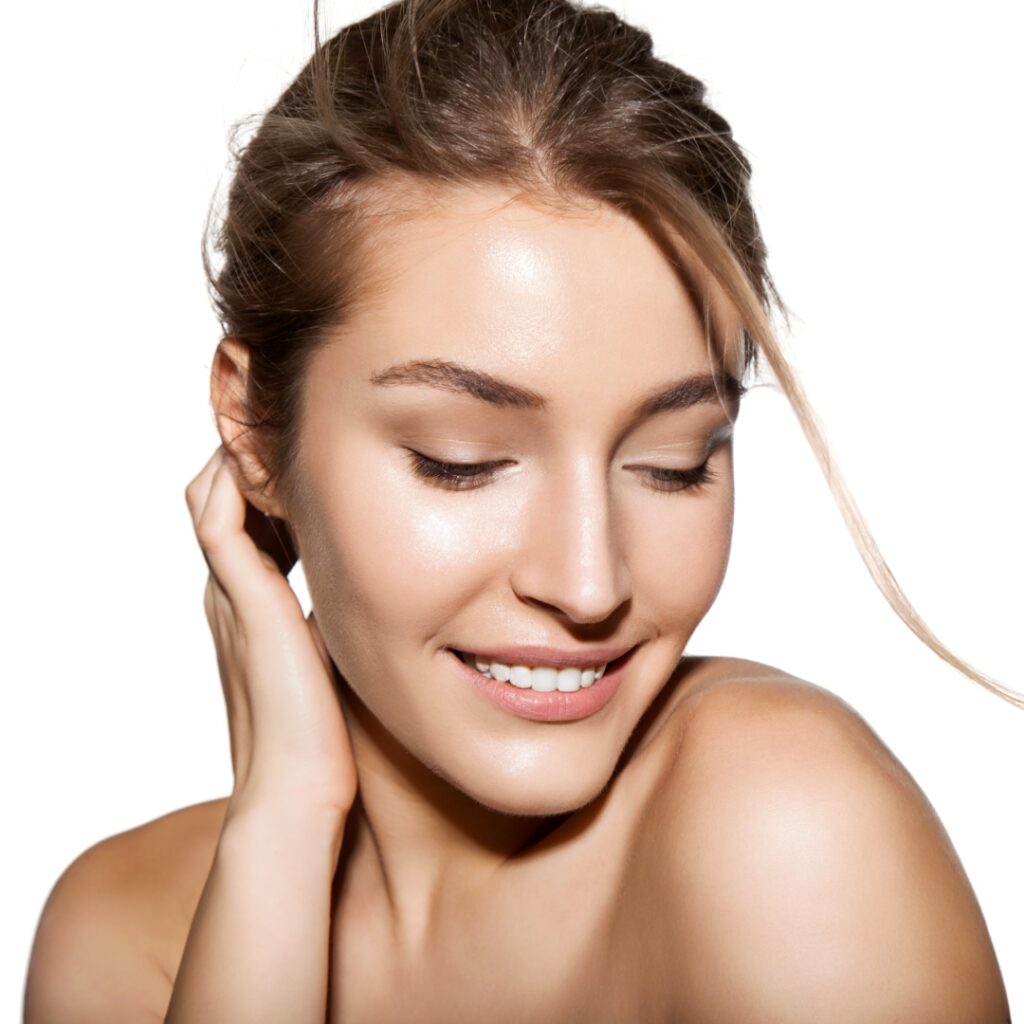
Mild heat stress has anti-aging hormetic effects on the growth of human skin fibroblasts (cells in connective tissue that produce collagen and other fibers).[87] In other words, it temporarily stresses your skin cells and induces them to build up their anti-oxidant defense systems and stimulating cell repair processes, which protect them from future stresses (like sun exposure or toxins).
Regular sauna use has a beneficial effect on skin health, improving hydration, maintaining surface pH, and resulting in less oil on the forehead of participants measured.[88]
In short, sauna use is a powerful tool for improving your skin health.

#12 - Increases Red Blood Cell Count (Increased Oxygen Delivery to Cells)
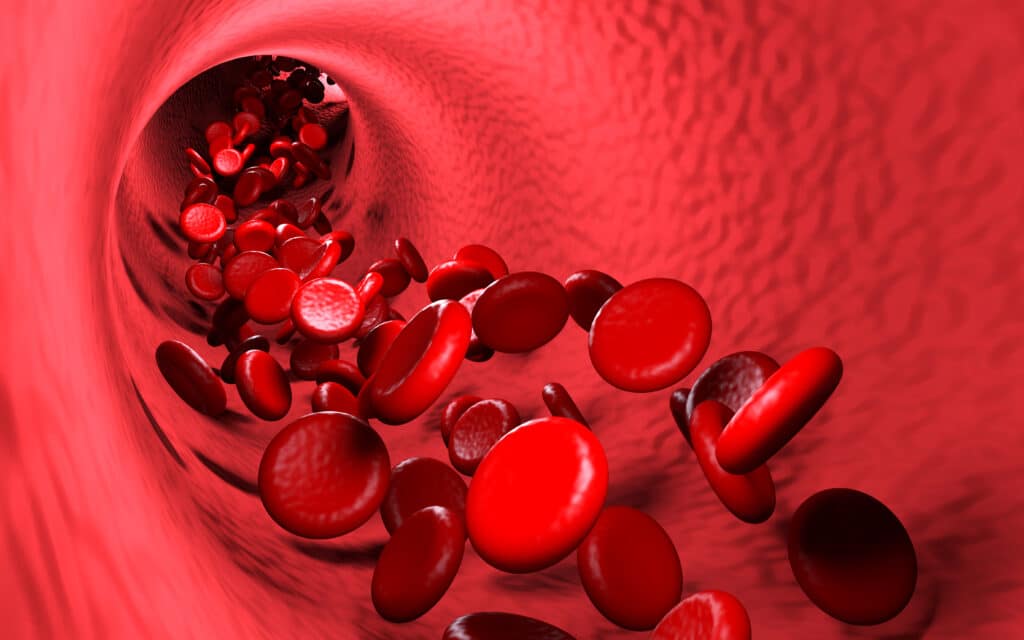
Sauna use also increases red blood cell count, which means greater oxygen delivery to muscles.[90] Greater capacity to deliver oxygen to your cells means better energy, as well as better brain performance and physical performance.
You may remember back to the Tour de France scandals involving competitors injecting their own stored blood (that had been removed weeks prior) to increase red blood cells, and injecting erythropoietin (EPO) to stimulate their body to produce more red blood cells. (Note: Athletes often train at altitude to stimulate some of these benefits as well).
Well, it turns out that sauna use mimics many of these effects and can also boost EPO and red blood cell count. This is likely because the body increases plasma volume (the overall amount of fluid in your blood vessels) – likely as a way to adapt to sweating so much – and then the body increases red blood cells to keep the concentration of red blood cells to plasma optimal.
The end effect of increased red blood cells is that saunas don’t make you better at tolerating heat – they actually help your stamina, endurance, performance (physical and brain performance), perceived exertion during exercise, and overall energy levels.
#13 - Decreases Pain and Fibromyalgia Symptoms
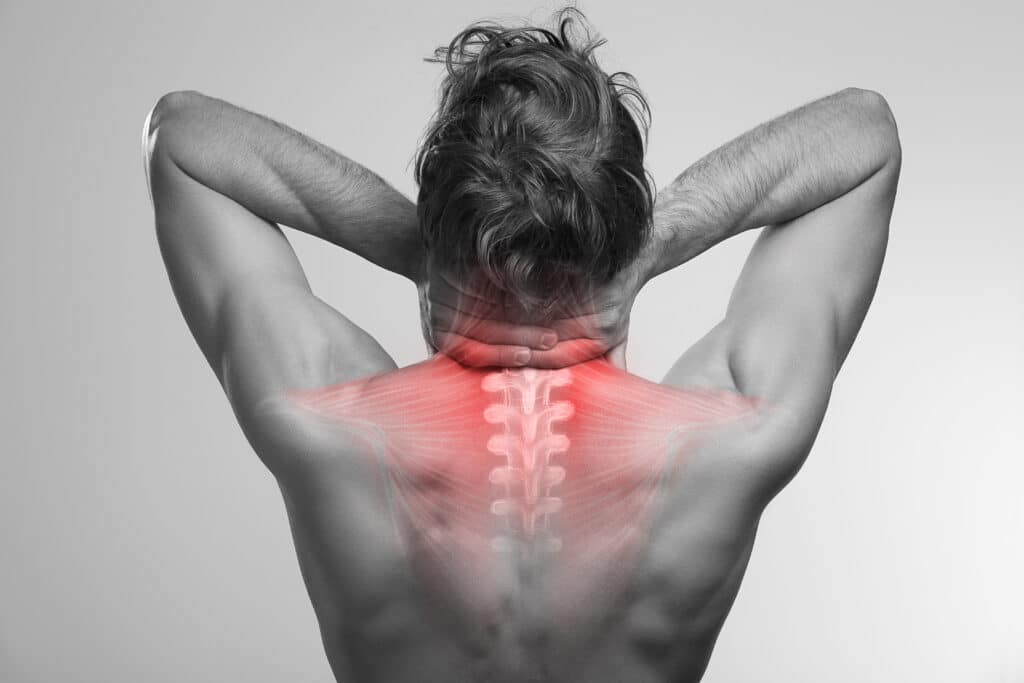
Sauna use has also proven to be exceptionally beneficial for people in pain.
Fibromyalgia patients receiving thermal therapy combining sauna and underwater exercise reported 31-77% reductions in pain and symptoms after the 12-week program. These improvements continued throughout the 6-month follow-up period, which also noted also an improved quality of life.[91]
Regular sauna use has also been found to reduce headache pain intensity in those suffering from chronic tension-type headaches (CTTH).[92]
In a group of patients with chronic pain, a combination of multidisciplinary treatment (including rehabilitation, exercise therapy, and cognitive behavioral therapy) and sauna use resulted in decreased pain, anger, and depression scores. After treatment, 77% of patients that received the multidisciplinary treatment and sauna were able to return to work as opposed to 50% of those who received the multidisciplinary approach without sauna.[93] This suggests that the sauna was a key aspect to recovery from chronic pain.
In people with leg pain from peripheral artery disease (PAD) – a common form of cardiovascular disease where plaque builds up in the arteries and hinders blood flow, causing pain while walking – researchers found that 6 weeks of daily 15-minute sauna sessions caused a nearly 70% reduction in pain (compared to no change in pain in the control group that didn’t use a sauna)![94] In addition, the group that used the sauna was able to walk twice as far without pain, compared to the control group which had no change in walking distance.
Another study looking at people with fibromyalgia showed huge reductions in pain. Researchers in Japan studied the effects of infrared (Waon) sauna sessions in 13 women with fibromyalgia.[95] They were given infrared sauna therapy (at 140°F) for 15 minutes either two or five days per week. Following the sauna, they laid down in a warm room and were covered with a blanket for another 30 minutes.
Pain was reduced by nearly half following just the first session (but this pain-killing effect only lasted for a few days initially). However, the effect became persistent and lasting following about ten treatments, at which point, the women reported pain reductions between 20%-78%! Again, that is after just ten 15-minute sauna sessions, which was completed in just 2-5 weeks of sauna use.
Moreover, 5 of 8 of these women who had to leave work due to pain and disability returned to work following just a few weeks of these sauna sessions!
#14 - Lowers Inflammation
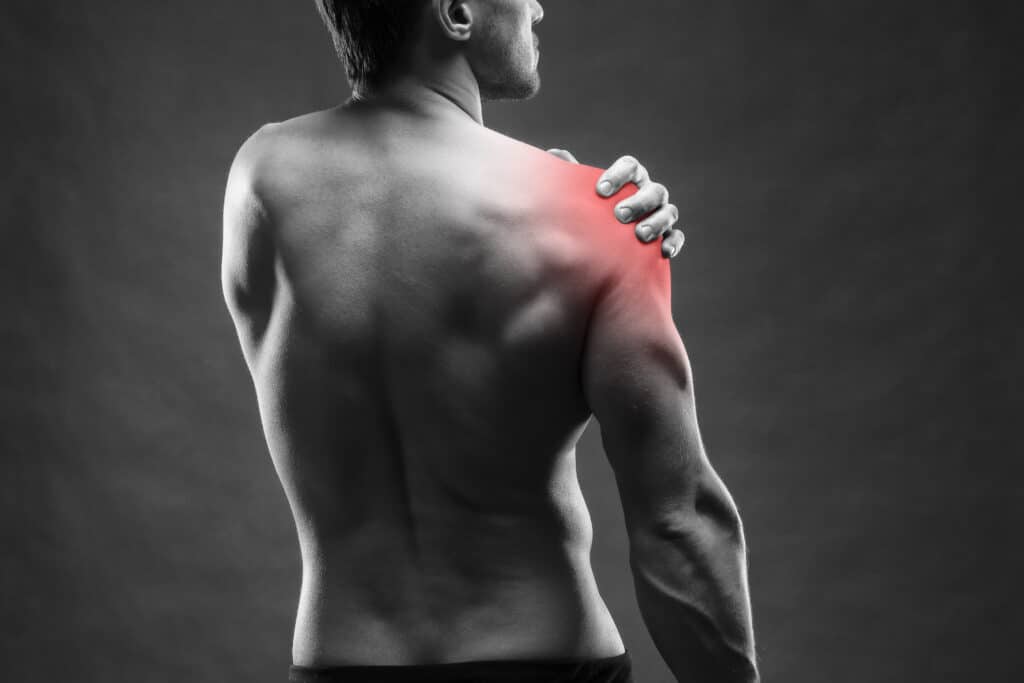
Inflammation has been implicated in almost every major disease. Although inflammation results from the attempt of the body to heal itself, chronic systemic inflammation can form a negative feedback loop that can prevent or delay healing. Reducing inflammation is critical for health. Chronic inflammation is also a major cause of chronic fatigue.
HSPs play a role as an anti-inflammatory protein, suggesting that sauna use may have benefits for chronic inflammation.[96], [97]
Indeed research confirms that it does have benefits.
Participants engaged in daily infrared sauna therapy for two weeks had lower markers of oxidative stress, which can lead to inflammation.[98]
Using the sauna is associated with lower levels of C-reactive protein (CRP), an important marker of systemic inflammation. Men in a study who used the sauna 2-3 times per week had 17% lower levels of CRP and those using the sauna 4-7 times per week had 32% lower levels of CRP compared to those only using it once per week. (And we don’t know how much higher the levels were for those not using the sauna at all!)[99]
#15 - Bolsters Immune System

Heat stress bolsters the immune system. Part of the mechanism for this is that HSPs stimulate both innate and adaptive immunity.[100] [101] There appear to be numerous effects and pathways of immune function that are altered by heat exposure.[102]
Regular exposure to sauna can reduce the incidence of the common cold. In one study, half of the participants engaged in sauna use once or twice per week while the other half did not. The incidence of the common cold was similar for the first three months of the study, but in the second three months, the sauna group had less than half the number of colds.[103]
High sauna temperatures easily kill infectious microbes on the skin,[104] which can be beneficial for skin infections of many kinds.
Many practitioners swear by the effectiveness of sauna use for hard-to-treat chronic infections.
#16 - May Potentially Combat Certain Types of Cancer

Evidence suggests that hyperthermia can cause apoptosis, or cell death, in both normal and tumor cells, but the damage caused by hyperthermia is not evident in normal cells.[105] This might be due to what has been called (in the context of fasting) “differential stress resistance,”[106] in which our own cells can adapt to stress but cancer cells cannot.
The FOX family proteins (such as FOXO3) play a critical role in tumor suppression.[107] Since we know that sauna use affects FOXO3, it is reasonable to suspect there may be a link here.
Cells with high acidity and low pH such as cancer tumor tissues are more susceptible to heat due to insufficient blood flow. Meanwhile, the effectiveness of radiation and some types of chemotherapy are enhanced by heat. Therefore, in many cancer treatments, the addition of hyperthermia results in an additive effect.[108], [109]
Hyperthermia alone (local, regional, or whole-body) has shown complete response rates of 13% in several cancers, and clinical trials adding hyperthermia to radiation and/or chemotherapy have resulted in as much as a 50% improvement in response rates, tumor control, and overall survival.[110]
The addition of hyperthermia to other treatments has shown significantly improved outcome in cancers of the head and neck, breast, brain, bladder, cervix, rectum, lung, esophagus, vulva and vagina, and also for melanoma.[111]
Hyperthermia induces cell death in melanoma and non-melanoma skin cancer cells.[112]
(DISCLAIMER: This article is not intended as medical advice or a substitute for seeing a physician. Please follow your physician’s recommendations, and please check with your physician before trying anything to treat any particular medical condition. Trying to self-treat may have consequences, so always check with your doctor before doing anything to treat any condition you may have. Check with your doctor about sauna use or hyperthermia to see if it’s right for you.)
#17 - May Help Prevent Alzheimer’s and Dementia

A Finnish study that followed 2,315 men for 20 years found that those who used the sauna 2-3 times per week (compared to only once per week) had a 22% and 20% risk reduction of dementia and Alzheimer’s disease, respectively. Importantly, this was after adjusting for age, alcohol consumption, BMI, blood pressure, smoking status, exercise habits, Type 2 diabetes, previous heart attack, resting heart rate, and cholesterol levels.[116] This is important in this type of long-term observational study so that we know that these results are not confounded by a person’s other lifestyle habits or health history.
But here’s the even more impressive part: Those who used the sauna 4-7 times per week had a 66% reduced risk of dementia and a 65% reduced risk of Alzheimer’s disease compared to those who only used the sauna once per week!
#18 - Decreases Risk of Lung & Respiratory Disease (and Improves Lung Function)
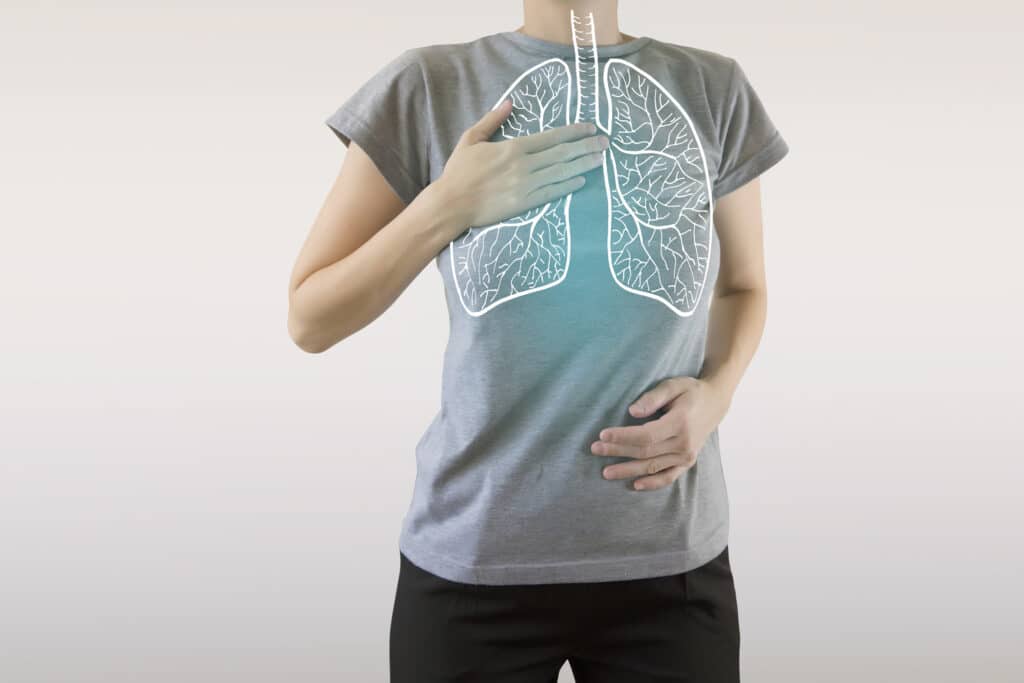
A large observational study found that those who used the sauna 4 or more times per week had a 41% lower risk of respiratory diseases over a 26-year follow-up period than those who used the sauna less than once per week. Those who used the sauna 2-3 times per week had a 27% lower risk.[117]
Sauna use decreases lung congestion, and increases the vital capacity, tidal volume, minute ventilation, and forced an expiratory volume of the lungs.[118], [119]
Patients with asthma or chronic bronchitis report that sauna improves their breathing.[120]
Patients with obstructive lung disease experienced improved lung function with sauna use.[121]
It is possible that the hot air of the sauna may initiate a hormetic response in the lung tissues and help stimulate cell repair and build up the internal antioxidant defense systems of the lung cells, thus protecting them from damage from a broad range of stressors.
#19 - Massively Improves Mood - Acts as an Anti-Depressant (Fights Depression)

Sauna use has been shown to combat depression in numerous ways. Depression has been linked in numerous studies to elevated core body temperature. As Dr. Charles Raison has explained in this interview on hyperthermia and depression, the research shows that, counterintuitively, giving people with depression a brief hit of even higher body temperature (e.g. via sauna use or other body heating devices) can lead to remarkable improvement in depression.
There are several mechanisms by which sauna use can combat depression:
- Temporarily increasing body temperature and spiking inflammation (and increasing heat-shock proteins) actually lowers baseline body temperature and inflammation (normalizes body temperature regulation and inflammatory/immune pathways), through hormesis.
- Heat hormesis also may promote autophagy in the brain, which makes brain cells more resilient and resistant to a range of stressors.
- Sauna use has been shown to cause a massive release of beta-endorphins in the brain, leading to better mood and fewer negative effects of stress.[122], [123]
- Heat acclimation also has the longer-term effect of making you more sensitive to endorphins. When the body is under heat stress, a substance called dynorphin is released. Dynorphin has a role in thermal regulation but it also produces dysphoria or discomfort. To counter this, the body responds by not only producing more endorphins but more endorphin receptors and increasing the sensitivity of those receptors.[124] This means you need less to feel good even when you are not heat-stressed, so you can get more pleasure from everyday activities, like watching a sunset.
Participants in “group sweat therapy” using the sauna obtained significantly more benefit from the therapy than the control group with no sauna use. They also experienced better interpersonal interactions, more relaxation, and greater stress relief.[125]
Another study found that after whole-body hyperthermia, cancer patients experienced a significant improvement in depression that lasted up to 72 hours.[126]
In a new 2016 double-blind, randomized control trial performed with people with a major depressive disorder, one single treatment of whole body hyperthermia using an infrared sauna resulted in a large reduction in depression scores. These improvements persisted over a 6-week period.[127] Researchers noted that this effect exceeds that of SSRI antidepressant drugs![128]
The researchers concluded: “Whole-body hyperthermia holds promise as a safe, rapid-acting, antidepressant modality with a prolonged therapeutic benefit.” [129]
Few treatments in existence have shown this sort of powerful effect on people with depression.
#20 - Improves Symptoms in Some Autoimmune Conditions
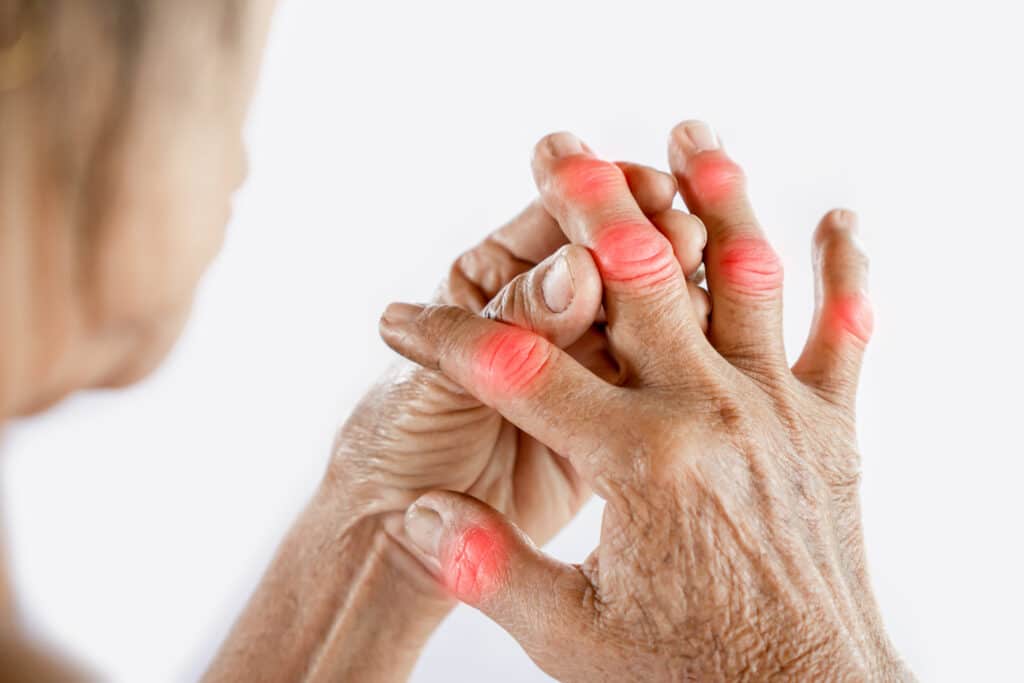
Sauna use might help the treatment of autoimmune diseases such as Type 1 diabetes and rheumatoid arthritis.[130], [131] This is because certain HSPs can regulate the immune system, suppressing overactive responses in autoimmune diseases.[132], [133]
In a case report, a woman with Sjogren’s syndrome underwent 20 sessions of infrared sauna treatment over the course of 4 weeks. She experienced “dramatic” improvements in dry mouth and arthritis and her antigen levels dropped into the normal range.[134]
Studies based on interviews of approximately 200 patients with rheumatoid arthritis have found that 40% to 70% experience alleviated pain and improved joint mobility with sauna use. However, approximately half of the patients temporarily experience worse pain the following day before seeing the improvements in symptoms. Many reported that this could be prevented by a cool shower after the sauna.[135], [136]
#21 - Combats Diabetes and Insulin Resistance
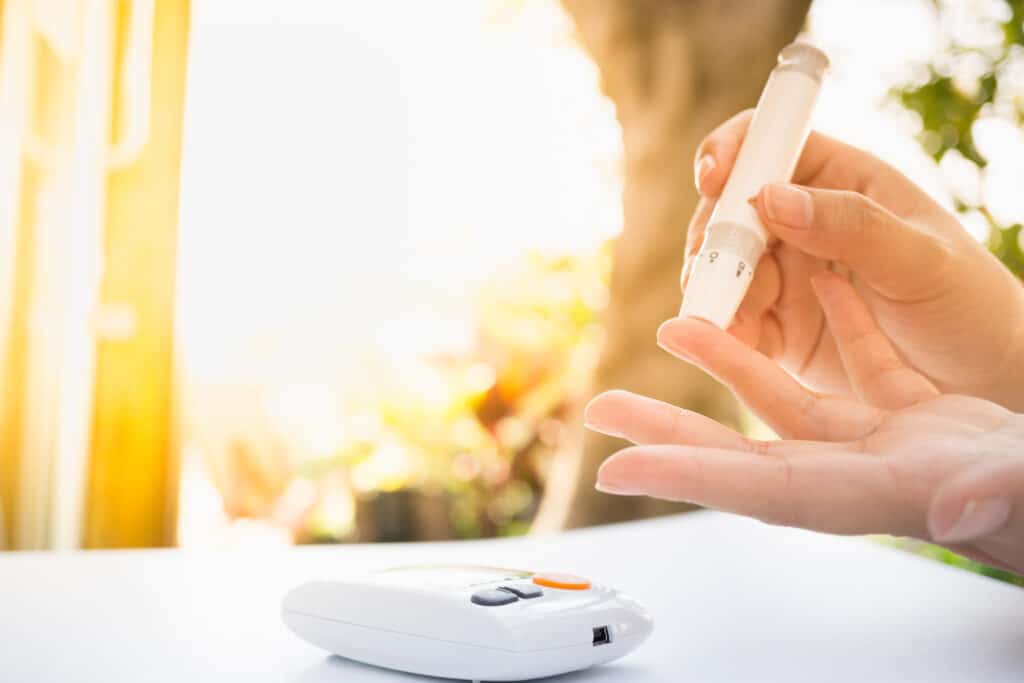
Reduction in HSPs has been shown in individuals with Type 2 diabetes and correlates with insulin resistance and glucose control.[137], [138]
Researchers have suggested that therapies utilizing HSPs might serve as a treatment tool for Type 2 diabetes and metabolic diseases.[139], [140]
FOXO increases insulin sensitivity by inducing expression of the insulin receptor.[141]
Diabetic mice exposed to whole-body hyperthermia 3 times per week for 12 weeks had a 31% reduction in insulin levels and significantly decreased fasting blood glucose levels.
The ability of hyperthermia to increase insulin sensitivity was further established in glucose tolerance tests and insulin tolerance tests.[142]
Increasing physical activity has a beneficial effect on metabolic health, but sometimes people who would benefit most are unable to do it due to medical conditions or disability. Sauna use cannot replace all the benefits of exercise, but it may replicate some of the benefits and alleviate some of the symptoms associated with Type 2 diabetes.[143]
#22 - Combats Symptoms of Chronic Fatigue Syndrome (CFS/ME)

In a case report, two CFS patients received infrared sauna therapy (Waon therapy) once a day for 35 days, and then once or twice per week thereafter for one year. They experienced improvements in physical and mental complaints, fatigue, depression, confusion, and sleep. Energy levels and hours of non-sedentary activity increased. Both patients were able to return to work 6 months after beginning therapy.[144]
A pilot study found that sauna use (Waon therapy) improved cerebral blood flow and brain function in all 11 participants with CFS. This correlated with self-rated improvements in CFS symptoms.[145]
Another study found that perceived fatigue, anxiety, depression, and performance status improved in patients with CFS following 4 weeks of Waon therapy.[146]
(While research on this topic is currently limited, I’ve found that among Energy Blueprint program members, many people say that sauna use has been the single biggest needle mover in helping them overcome chronic fatigue and recover their energy.)
Key Facts About Saunas
How hot do saunas get? (And why this is CRITICALLY IMPORTANT)
This is an important question, since many different types of saunas exist and they get to VERY different temperatures.
This is an especially critical point, since many of the benefits of sauna use may depend not just on heating the body up to the point of sweating, but of actually having the body in a chamber of VERY hot air. To get the full benefits of sauna use, you really want to get yourself to the point of feeling uncomfortably hot — to the point where your body starts saying “okay, it’s time to get out.”
If you’re in a sauna and you’re sweating, but you never get to the point of feeling any real discomfort from the heat (i.e. if you feel like you could stay in there all day), that means it’s not hot enough, and that you’re not getting all the benefits of sauna use.
Just as with exercise, if you never push your body to the point of any discomfort, you’re not going to stimulate any new beneficial physiological adaptations. (I.e. You’re not going to get all the potential benefits).
This is key, because many infrared saunas simply don’t get very hot — they have a low maximal temperature.
There are two basic types of saunas. Traditional saunas (also known as Finnish saunas) use radiant heat to achieve temperatures between 70 and 100°C (158-212°F) with a face-level temperature of 80-90°C (176-200°F). Sometimes water is intermittently poured over rocks to temporarily increase the humidity, but not all saunas have this feature.[156], [157]
Infrared saunas, in contrast, generally have temperatures from 40-60°C (104-150°F). (Sunlighten’s AMPLIFY sauna are the exception, and get up to about 170 degrees F). Because infrared heat penetrates into tissue (approximately 3–4 cm) more than warmed air, users start sweating at lower ambient temperatures than in the traditional sauna.[158] However, you need to know that HEAT MATTERS! So I strongly recommend getting a sauna that goes up to higher temperatures, and Sunlighten’s AMPLIFY sauna is a top choice. (And they are offering $600 off on their Amplify sauna to the Energy Blueprint audience.)
Infrared vs. Traditional Sauna
It’s important to be aware that traditional saunas generally are a hotter and more intense/”stressful” experience than infrared saunas.
Based on this, I generally recommend sauna type based on the individual and their needs:
- If you’re a young, totally healthy, and very physically fit person with high heat tolerance, traditional saunas may have the edge in terms of stimulating the benefits of heat hormesis (where you really do want to heat your body up as much as tolerable).
- If you’re not very healthy or suffering from chronic fatigue (or otherwise have a low heat tolerance or low tolerance to stressors of all kinds), I strongly suggest going with an infrared saunas. This will give the best mix of sauna benefits while being very gentle on the body.
KEY POINT: Get the right type of sauna for YOU!
My Top Recommendations
For most regular people (i.e. not young athletes), I have found that infrared saunas tend to be better – they allow people to get the benefits of saunas in a much gentler way. The experience is more relaxing, they can stay in longer (and thus sweat and detoxify more), and they come out feeling great (instead of feeling drained). (Sunlighten’s AMPLIFY Sauna may be the best of both worlds — the gentleness of infrared, but they also have a max temperature that is about 20 degrees higher than other saunas from other companies, getting up to around 170 degrees F.
One other important consideration to be aware of here is that there are huge differences in the quality of construction and materials used in infrared saunas. Not all infrared saunas are created equal!
In fact, they are very far from equal. There are plenty of seriously cheap infrared saunas one can get that look nice (when you look at images online), and then once you get it, you discover that the wood is near paper-thin and breaks easily, it uses plywood filled with glues (which off-gasses harmful chemicals into the air while you’re in it), and uses low quality infrared emitters which don’t emit energy at the right therapeutic wavelengths.
So I must issue a caution here: DO NOT judge a sauna just by looks! It’s a massive mistake. There are HUGE differences in the quality of infrared saunas! There are tons of very cheap saunas available online from China at very low prices. Don’t be seduced by cheap, toxic, low temperature infrared saunas that will off-gas and break easily. You get what you pay for. And that saying is especially true when it comes to infrared saunas. If you’re going to spend a chunk of money on a sauna, do not get one with junk wood, with glues that off-gas (and toxify your body instead of de-toxify your body), and with low-quality infrared emitters.
Saunas are one of the most powerful strategies to detoxify your body and improve your health. So if you’re going to get a sauna, spend the money to do it right and get a quality sauna that will be with you for decades. (Not a low-quality one you’re going to have to replace in a year because it breaks.)
Sunlighten is my top recommended brand, for several reasons:
- They use absolutely top quality wood (and have non-allergenic options)
- They use the highest quality emitters (which emit the highest percentage of infrared in the therapeutic wavelengths) Sunlighten has 3rd party emissivity testing
- They do not use plywood or glues which can off-gas in the sauna
- They have excellent warranties
- They have third-party testing to prove that their saunas are low EMF
- Check out Sunlighten’s Craftsmanship page to see how they hit all of these marks and more
- Sunlighten offers a one-person laying “dome” style sauna (which is a nice option on the cheaper side)
- Sunlighten’s Amplify sauna gets up to 165 degrees, also much hotter than many other infrared saunas on the mark
- Sunlighten just released the mPulse Smart Sauna– now integrated with red light therapy. This will be another great way to deliver red light into your body, accompanying all three infrared wavelengths.
TOP SAUNA RECOMMENDATIONS
For Those People With Fatigue Or Other Health Issues Or Who Have a Lower Heat Tolerance (or who are just not in great health):
My top choice for most people is an infrared sauna from Sunlighten (the AMPLIFY model)
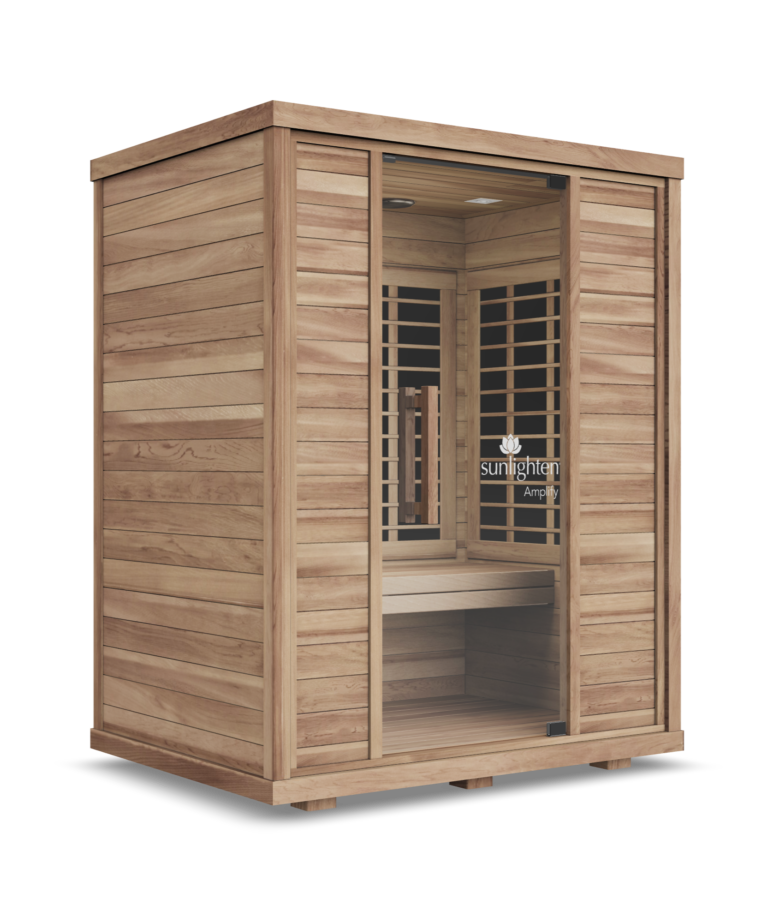
For Those People Who Want The An Amazing Infrared Sauna At A Cheap Price (and/or who don't have room for a huge sauna): Sunlighten Solo
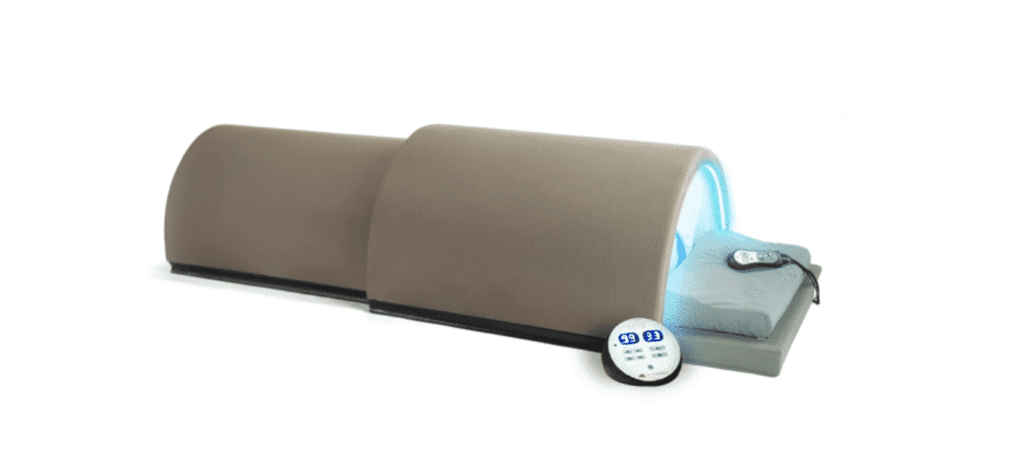
Best Overall Bang For The Buck: Sunlighten Solo
If you’re on a tight budget (under $3,000), you cannot beat the Sunlighten Solo, in my opinion. It’s that single-person laying dome pictured above and it gets very hot, and works well as a sauna (even if it doesn’t look like the typical sauna you’re used to seeing).
If you can afford to invest more in your health, Sunlighten Amplify saunas offer amazing options with a very high maximal temperature (higher than other infrared saunas). For those who are not heat tolerant but still want the benefits of infrared light therapy, Sunlighten’s mPulse sauna is a great option. It offers all 3 infrared wavelengths at the optimal dose to deliver specific health benefits, and has the addition of red light panels for even more health benefits. (Again, you can get a $600 discount right now with Sunlighten).
Again, remember this key point: Generally speaking, infrared saunas are going to be best for most people. Sunlighten delivers optimal dosages of Near, Mid and Far infrared (and red light) with their mPulse sauna, which give a wide range of health benefits for people who prefer a comfortable, enjoyable experience. Traditional Finnish saunas are likely better for very fit and healthy people with a high heat tolerance.
How to Use a Sauna – Practical Tips
Using a sauna is a very individual thing, as some young healthy and very physically fit may have a very high heat tolerance and can handle being in a very hot sauna for over 30 minutes right from the start.
Other people whose health is compromised may only be able to tolerate relatively low temperatures, and for maybe only a few minutes at first. So please adjust accordingly and listen to your body. (I.e. If you feel light-headed or uncomfortable, get out of the sauna.)
How to use a sauna – Starting out
If you’re unsure about your health status and it’s your first time using a sauna, I suggest no more than 3 or 4 minutes for your first session. Then build up slowly from there, adding 30-60 seconds to each session as feels comfortable for you (until you get into the durations suggested below.)
How often to use a sauna
My general recommendation (based on the evidence) is to use a sauna between 3-7 times per week. (Remember, health benefits have been shown all the way up to using a sauna 7 times per week, or daily.)
How to use a sauna – Temperature and duration
Here are some general guidelines as far as temperature and duration:
- Infrared sauna: 130-150 degrees Fahrenheit (one infrared sauna brand gets up to 170 degrees), for 15-45 minutes
- Regular (Finnish, or moist) sauna: 175-200 degrees Fahrenheit, for 10-40 minutes
Again, these are recommendations to work up to – NOT to start with on your initial session.
Think of this like exercise – just as you wouldn’t want to go from being sedentary for months to running a marathon or trying to squat 400 pounds, you also don’t want to jump into extreme heat or sauna duration before you’ve developed your body’s heat tolerance system. You want to slowly allow your body to get heat-adapted.
Conclusion
Based on the current evidence, sauna use appears to be one of the most potent health-improving technologies known to man — to benefit immediate and long-term health, energy, brain function/mood, physical performance, and mental performance.
I believe this is one of the top three most powerful strategies to enhance your health, increase your energy, prevent disease, and extend longevity in existence – on par with nutrition and exercise. (And yet, it is vastly under-rated and few people are aware of how powerful it is.)
As I said above, based on feedback from thousands of Energy Blueprint program members, a huge portion of them have reported that sauna use has been the single biggest needle mover in helping them overcoming fatigue and increasing their energy.
Let me repeat that: I routinely hear from people that using a sauna several times a week was THE THING that really improved their energy levels.
I also believe that it is the single most powerful tool for detoxification that we have available to us. (Weekly detoxification routines are vital in our world, which is now, unfortunately, filled with countless types of toxins that we’re exposed to daily.)
In short, saunas are one of the most powerful strategies in existence for improving your health, energy and longevity.
Like I said before, if there were a pharmaceutical drug that research showed had even half the benefits that sauna use does, it would be regarded as the most incredible “miracle drug” ever discovered and would be prescribed to basically everyone. And doctors would look at you like you were insane if you weren’t taking it. That drug exists – it just comes in the form of a sauna you sit in rather than a pill you pop.
I strongly encourage you to make the jump to get yourself a sauna today (particularly from a top-quality trusted brand, and that gets up to hotter temperatures) and start reaping the benefits now.
References
[1] Source: Thomas KN. Harnessing heat for health: A clinical application of heat stress. Temperature (Austin). 2017;4(3):208-210. doi:10.1080/23328940.2017.1317379.
[2] Laukkanen T, Khan H, Zaccardi F, Laukkanen JA. Association between sauna bathing and fatal cardiovascular and all-cause mortality events. JAMA Intern Med. 2015;175(4):542-548. doi:10.1001/jamainternmed.2014.8187.
[3] Singh R, Kolvraa S, Rattan SIS. Genetics of human longevity with emphasis on the relevance of HSP70 as candidate genes. Front Biosci. 2007;12:4504-4513.
[4] Selsby JT, Rother S, Tsuda S, Pracash O, Quindry J, Dodd SL. Intermittent hyperthermia enhances skeletal muscle regrowth and attenuates oxidative damage following reloading. J Appl Physiol. 2007;102(4):1702-1707. doi:10.1152/japplphysiol.00722.2006.
[5] Naito H, Powers SK, Demirel HA, Sugiura T, Dodd SL, Aoki J. Heat stress attenuates skeletal muscle atrophy in hindlimb-unweighted rats. J Appl Physiol. 2000;88(1):359-363. doi:10.1152/jappl.2000.88.1.359.
[6] Singh R, Kølvraa S, Bross P, et al. Anti-inflammatory heat shock protein 70 genes are positively associated with human survival. Curr Pharm Des. 2010;16(7):796-801.
[7] Michalski AI, Johnson TE, Cypser JR, Yashin AI. Heating stress patterns in Caenorhabditis elegans longevity and survivorship. Biogerontology. 2001;2(1):35-44.
[8] Khazaeli AA, Tatar M, Pletcher SD, Curtsinger JW. Heat-induced longevity extension in Drosophila. I. Heat treatment, mortality, and thermotolerance. J Gerontol A Biol Sci Med Sci. 1997;52(1):B48-52.
[9] Lithgow GJ, White TM, Melov S, Johnson TE. Thermotolerance and extended life-span conferred by single-gene mutations and induced by thermal stress. Proc Natl Acad Sci U S A. 1995;92(16):7540-7544.
[10] Tatar M, Khazaeli AA, Curtsinger JW. Chaperoning extended life. Nature. 1997;390(6655):30. doi:10.1038/36237.
[11] Flachsbart F, Caliebe A, Kleindorp R, et al. Association of FOXO3A variation with human longevity confirmed in German centenarians. Proc Natl Acad Sci U S A. 2009;106(8):2700-2705. doi:10.1073/pnas.0809594106.
[12] Willcox BJ, Donlon TA, He Q, et al. FOXO3A genotype is strongly associated with human longevity. Proc Natl Acad Sci U S A. 2008;105(37):13987-13992. doi:10.1073/pnas.0801030105.
[13] Tsai W-B, Chung YM, Takahashi Y, Xu Z, Hu MC-T. Functional interaction between FOXO3a and ATM regulates DNA damage response. Nat Cell Biol. 2008;10(4):460-467. doi:10.1038/ncb1709.
[14] Myatt SS, Lam EW-F. The emerging roles of forkhead box (Fox) proteins in cancer. Nat Rev Cancer. 2007;7(11):847-859. doi:10.1038/nrc2223.
[15] Paik J-H, Kollipara R, Chu G, et al. FoxOs are lineage-restricted redundant tumor suppressors and regulate endothelial cell homeostasis. Cell. 2007;128(2):309-323. doi:10.1016/j.cell.2006.12.029.
[16] Ekoff M, Kaufmann T, Engström M, et al. The BH3-only protein Puma plays an essential role in cytokine deprivation induced apoptosis of mast cells. Blood. 2007;110(9):3209-3217. doi:10.1182/blood-2007-02-073957.
[17] Vina, J., et al Mitochondria and Aging 2018
[18] Ziegler, D. V., et. al. Mitochondrial effectors of cellular senescence: beyond the free radical theory of aging 2014
[19] Tamura, Y., et al. Heat stress induces mitochondrial adaptations in skeletal muscle 2007
[20] EWG Body Burden: The Pollution in Newborns 2005
[21] Rea, WJ, PanY, Johnson AR, Ross GH, Suyama H, Fenyves EJ. Reduction of chemical sensitivity by means of heat depuration, physical therapy and nutritional supplementation. Journal of nutritional and environmental medicine. 1996;6:141–148.
[22]Sears ME, Kerr KJ, Bray RI. Arsenic, cadmium, lead, and mercury in sweat: A systematic review. J Environ Public Health. 2012;2012:184745. doi:10.1155/2012/184745.
[23] Genuis SJ, Birkholz D, Rodushkin I, Beesoon S. Blood, urine, and sweat (BUS) study: Monitoring and elimination of bioaccumulated toxic elements. Arch Environ Contam Toxicol. 2011;61(2):344-357. doi:10.1007/s00244-010-9611-5.
[24] Kuwahata S, Miyata M, Fujita S, et al. Improvement of autonomic nervous activity by Waon therapy in patients with chronic heart failure. J Cardiol. 2011;57(1):100-106. doi:10.1016/j.jjcc.2010.08.005.
[25] Eisalo A, Luurila OJ. The Finnish sauna and cardiovascular diseases. Ann Clin Res. 1988;20(4):267-270.
[26] Rea, WJ, PanY, Johnson AR, Ross GH, Suyama H, Fenyves EJ. Reduction of chemical sensitivity by means of heat depuration, physical therapy and nutritional supplementation. Journal of nutritional and environmental medicine. 1996;6:141–148.
[27] Genuis SJ, Lane K, Birkholz D. Human Elimination of Organochlorine Pesticides: Blood, Urine, and Sweat Study. Biomed Res Int. 2016;2016:1624643. doi:10.1155/2016/1624643.
[28] Ross GH, Sternquist MC. Methamphetamine exposure and chronic illness in police officers: Significant improvement with sauna-based detoxification therapy. Toxicol Ind Health. 2012;28(8):758-768. doi:10.1177/0748233711425070.
[29] Schnare DW, Robinson PC. Reduction of the human body burdens of hexachlorobenzene and polychlorinated biphenyls. IARC Sci Publ. 1986;(77):597-603.
[30] Dahlgren J, Cecchini M, Takhar H, Paepke O. Persistent organic pollutants in 9/11 world trade center rescue workers: Reduction following detoxification. Chemosphere. 2007;69(8):1320-1325. doi:10.1016/j.chemosphere.2006.05.127.
[31] CDC Heart Disease Facts
[32] WHO – The Top 10 Causes Of Death
[33] Laukkanen T, Khan H, Zaccardi F, Laukkanen JA. Association between sauna bathing and fatal cardiovascular and all-cause mortality events. JAMA Intern Med. 2015;175(4):542-548. doi:10.1001/jamainternmed.2014.8187.
[34] Kunutsor SK, Khan H, Laukkanen T, Laukkanen JA. Joint associations of sauna bathing and cardiorespiratory fitness on cardiovascular and all-cause mortality risk: A long-term prospective cohort study. Ann Med. 2018;50(2):139-146. doi:10.1080/07853890.2017.1387927.
[35] Miyata M, Tei C. Waon therapy for cardiovascular disease: Innovative therapy for the 21st century. Circ J. 2010;74(4):617-621.
[36] Miyata M, Tei C. Waon therapy for cardiovascular disease: Innovative therapy for the 21st century. Circ J. 2010;74(4):617-621.
[37] Tei C, Shinsato T, Miyata M, Kihara T, Hamasaki S. Waon therapy improves peripheral arterial disease. J Am Coll Cardiol. 2007;50(22):2169-2171. doi:10.1016/j.jacc.2007.08.025.
[38] Tei C, Shinsato T, Miyata M, Kihara T, Hamasaki S. Waon therapy improves peripheral arterial disease. J Am Coll Cardiol. 2007;50(22):2169-2171. doi:10.1016/j.jacc.2007.08.025.
[39] Miyata M, Tei C. Waon therapy for cardiovascular disease: Innovative therapy for the 21st century. Circ J. 2010;74(4):617-621.
[40] Biro S, Masuda A, Kihara T, Tei C. Clinical implications of thermal therapy in lifestyle-related diseases. Exp Biol Med (Maywood). 2003;228(10):1245-1249.
[41] Crinnion WJ. Sauna as a valuable clinical tool for cardiovascular, autoimmune, toxicant- induced and other chronic health problems. Altern Med Rev. 2011;16(3):215-225.
[42] Siewert C, Siewert H, Winterfeld HJ, Strangfeld D. Das Verhalten von zentraler und peripherer Hämodynamik unter isometrischer und dynamischer Belastung bei Hypertonikern unter regelmässiger Saunabehandlung [The behavior of central and peripheral hemodynamics in isometric and dynamic stress in hypertensive patients treatment with regular sauna therapy]. Z Kardiol. 1994;83(9):652-657.
[43] WebMD – Can Sauna Sweats Lower Your Blood Pressure?
[44] Crinnion WJ. Sauna as a valuable clinical tool for cardiovascular, autoimmune, toxicant- induced and other chronic health problems. Altern Med Rev. 2011;16(3):215-225.
[45] Henstridge DC, Whitham M, Febbraio MA. Chaperoning to the metabolic party: The emerging therapeutic role of heat-shock proteins in obesity and type 2 diabetes. Mol Metab. 2014;3(8):781-793. doi:10.1016/j.molmet.2014.08.003.
[46] Biro S, Masuda A, Kihara T, Tei C. Clinical implications of thermal therapy in lifestyle-related diseases. Exp Biol Med (Maywood). 2003;228(10):1245-1249.
[47] Vuori I. Sauna bather’s circulation. Ann Clin Res. 1988;20(4):249-256.
[48] Scoon GSM, Hopkins WG, Mayhew S, Cotter JD. Effect of post-exercise sauna bathing on the endurance performance of competitive male runners. J Sci Med Sport. 2007;10(4):259-262. doi:10.1016/j.jsams.2006.06.009.
[49] Costa RJS, Crockford MJ, Moore JP, Walsh NP. Heat acclimation responses of an ultra-endurance running group preparing for hot desert-based competition. Eur J Sport Sci. 2014;14 Suppl 1:S131-41. doi:10.1080/17461391.2012.660506.
[50] Sawka, MN, Wenger CB, Pandolf K. Thermoregulatory Responses to Acute Exercise-Heat Stress and Heat Acclimation. Comprehensive Physiology. 2011:157-185. doi:10.1002/cphy.cp040109.
[51] Garrett AT, Creasy R, Rehrer NJ, Patterson MJ, Cotter JD. Effectiveness of short-term heat acclimation for highly trained athletes. Eur J Appl Physiol. 2012;112(5):1827-1837. doi:10.1007/s00421-011-2153-3.
[52] Garrett AT, Rehrer NJ, Patterson MJ. Induction and decay of short-term heat acclimation in moderately and highly trained athletes. Sports Med. 2011;41(9):757-771. doi:10.2165/11587320-000000000-00000.
[53] Costa RJS, Crockford MJ, Moore JP, Walsh NP. Heat acclimation responses of an ultra-endurance running group preparing for hot desert-based competition. Eur J Sport Sci. 2014;14 Suppl 1:S131-41. doi:10.1080/17461391.2012.660506.
[54] King DS, Costill DL, Fink WJ, Hargreaves M, Fielding RA. Muscle metabolism during exercise in the heat in unacclimatized and acclimatized humans. J Appl Physiol. 1985;59(5):1350-1354. doi:10.1152/jappl.1985.59.5.1350.
[55] Kirwan JP, Costill DL, Kuipers H, et al. Substrate utilization in leg muscle of men after heat acclimation. J Appl Physiol. 1987;63(1):31-35. doi:10.1152/jappl.1987.63.1.31.
[56] Tim Ferris – Are Saunas The Next Big Performance-Enhancing “Drug”
[57] Selsby JT, Rother S, Tsuda S, Pracash O, Quindry J, Dodd SL. Intermittent hyperthermia enhances skeletal muscle regrowth and attenuates oxidative damage following reloading. J Appl Physiol. 2007;102(4):1702-1707. doi:10.1152/japplphysiol.00722.2006.
[58] Naito H, Powers SK, Demirel HA, Sugiura T, Dodd SL, Aoki J. Heat stress attenuates skeletal muscle atrophy in hindlimb-unweighted rats. J Appl Physiol. 2000;88(1):359-363. doi:10.1152/jappl.2000.88.1.359.
[59] Hannuksela ML, Ellahham S. Benefits and risks of sauna bathing. The American Journal of Medicine. 2001;110(2):118-126. doi:10.1016/S0002-9343(00)00671-9.
[60] Leppäluoto J, Huttunen P, Hirvonen J, Väänänen A, Tuominen M, Vuori J. Endocrine effects of repeated sauna bathing. Acta Physiol Scand. 1986;128(3):467-470. doi:10.1111/j.1748-1716.1986.tb08000.x.
[61] Velloso CP. Regulation of muscle mass by growth hormone and IGF-I. Br J Pharmacol. 2008;154(3):557-568. doi:10.1038/bjp.2008.153.
[62] Kokura S, Adachi S, Manabe E, et al. Whole body hyperthermia improves obesity-induced insulin resistance in diabetic mice. Int J Hyperthermia. 2007;23(3):259-265. doi:10.1080/02656730601176824.
[63] Henstridge DC, Whitham M, Febbraio MA. Chaperoning to the metabolic party: The emerging therapeutic role of heat-shock proteins in obesity and type 2 diabetes. Mol Metab. 2014;3(8):781-793. doi:10.1016/j.molmet.2014.08.003.
[64] Selsby JT, Dodd SL. Heat treatment reduces oxidative stress and protects muscle mass during immobilization. Am J Physiol Regul Integr Comp Physiol. 2005;289(1):R134-9. doi:10.1152/ajpregu.00497.2004.
[65] Naito H, Powers SK, Demirel HA, Sugiura T, Dodd SL, Aoki J. Heat stress attenuates skeletal muscle atrophy in hindlimb-unweighted rats. J Appl Physiol. 2000;88(1):359-363. doi:10.1152/jappl.2000.88.1.359.
[66] Selsby JT, Rother S, Tsuda S, Pracash O, Quindry J, Dodd SL. Intermittent hyperthermia enhances skeletal muscle regrowth and attenuates oxidative damage following reloading. J Appl Physiol. 2007;102(4):1702-1707. doi:10.1152/japplphysiol.00722.2006.
[67] King DS, Costill DL, Fink WJ, Hargreaves M, Fielding RA. Muscle metabolism during exercise in the heat in unacclimatized and acclimatized humans. J Appl Physiol. 1985;59(5):1350-1354. doi:10.1152/jappl.1985.59.5.1350.
[68] Khamwong P, Paungmali A, Pirunsan U, Joseph L. Prophylactic Effects of Sauna on Delayed-Onset Muscle Soreness of the Wrist Extensors. Asian J Sports Med. 2015;6(2):e25549. doi:10.5812/asjsm.6(2)2015.25549.
[69] Kukkonen-Harjula K, Kauppinen K. Health effects and risks of sauna bathing. International Journal of Circumpolar Health. 2016;65(3):199. doi:10.3402/ijch.v65i3.18102.
[70] Mero A, Tornberg J, Mäntykoski M, Puurtinen R. Effects of far-infrared sauna bathing on recovery from strength and endurance training sessions in men. Springerplus. 2015;4:321. doi:10.1186/s40064-015-1093-5.
[71] Selsby JT, Rother S, Tsuda S, Pracash O, Quindry J, Dodd SL. Intermittent hyperthermia enhances skeletal muscle regrowth and attenuates oxidative damage following reloading. J Appl Physiol. 2007;102(4):1702-1707. doi:10.1152/japplphysiol.00722.2006.
[72] Nath KA, Balla G, Vercellotti GM, et al. Induction of heme oxygenase is a rapid, protective response in rhabdomyolysis in the rat. J Clin Invest. 1992;90(1):267-270. doi:10.1172/JCI115847.
[73] Goekint M, Roelands B, Heyman E, Njemini R, Meeusen R. Influence of citalopram and environmental temperature on exercise-induced changes in BDNF. Neurosci Lett. 2011;494(2):150-154. doi:10.1016/j.neulet.2011.03.001.
[74] van Praag H, Christie BR, Sejnowski TJ, Gage FH. Running enhances neurogenesis, learning, and long-term potentiation in mice. Proc Natl Acad Sci U S A. 1999;96(23):13427-13431.
[75] Knackered Nerves: Do Low BDNF Levels Spell Nerve Exhaustion in Chronic Fatigue Syndrome? Pt. I
[76] Sorenson, M., et al. Brain Derived Neurotrophic Factor is Decreased in Chronic Fatigue Syndrome and Multiple Sclerosis 2014
[77] Tim Ferris – Are Saunas The Next Big Performance-Enhancing “Drug”
[78] Leppaluoto, J. et. al. 1986 Endocrine effects of repeated sauna bathing
[79] Hannuksela ML, Ellahham S. Benefits and risks of sauna bathing. The American Journal of Medicine. 2001;110(2):118-126. doi:10.1016/S0002-9343(00)00671-9.
[80] Kukkonen-Harjula K, Oja P, Laustiola K, et al. Haemodynamic and hormonal responses to heat exposure in a Finnish sauna bath. Europ. J. Appl. Physiol. 1989;58(5):543-550. doi:10.1007/BF02330710.
[81] Laatikainen T, Salminen K, Kohvakka A, Pettersson J. Response of plasma endorphins, prolactin and catecholamines in women to intense heat in a sauna. Eur J Appl Physiol Occup Physiol. 1988;57(1):98-102.
[82] Christman JV, Gisolfi CV. Heat acclimation: Role of norepinephrine in the anterior hypothalamus. J Appl Physiol. 1985;58(6):1923-1928. doi:10.1152/jappl.1985.58.6.1923.
[83] Gregg C, Shikar V, Larsen P, et al. White matter plasticity and enhanced remyelination in the maternal CNS. J Neurosci. 2007;27(8):1812-1823. doi:10.1523/JNEUROSCI.4441-06.2007.
[84] Kukkonen-Harjula K, et al. How the sauna affects the endocrine system
[85] Vuori I. Sauna bather’s circulation. Ann Clin Res. 1988;20(4):249-256.
[86] Brunt VE, Eymann TM, Francisco MA, Howard MJ, Minson CT. Passive heat therapy improves cutaneous microvascular function in sedentary humans via improved nitric oxide-dependent dilation. J Appl Physiol. 2016;121(3):716-723. doi:10.1152/japplphysiol.00424.2016.
[87] Rattan SIS. Hormetic modulation of aging and longevity by mild heat stress. Dose Response. 2006;3(4):533-546. doi:10.2203/dose-response.003.04.008.
[88] Kowatzki D, Macholdt C, Krull K, et al. Effect of regular sauna on epidermal barrier function and stratum corneum water-holding capacity in vivo in humans: A controlled study. Dermatology (Basel). 2008;217(2):173-180. doi:10.1159/000137283.
[89] Hannuksela M, Väänänen A. The sauna, skin and skin diseases. Ann Clin Res. 1988;20(4):276-278.
[90] Scoon GSM, Hopkins WG, Mayhew S, Cotter JD. Effect of post-exercise sauna bathing on the endurance performance of competitive male runners. J Sci Med Sport. 2007;10(4):259-262. doi:10.1016/j.jsams.2006.06.009.
[91] Matsumoto S, Shimodozono M, Etoh S, Miyata R, Kawahira K. Effects of thermal therapy combining sauna therapy and underwater exercise in patients with fibromyalgia. Complement Ther Clin Pract. 2011;17(3):162-166. doi:10.1016/j.ctcp.2010.08.004.
[92] Kanji G, Weatherall M, Peter R, Purdie G, Page R. Efficacy of regular sauna bathing for chronic tension-type headache: A randomized controlled study. J Altern Complement Med. 2015;21(2):103-109. doi:10.1089/acm.2013.0466.
[93] Masuda A, Koga Y, Hattanmaru M, Minagoe S, Tei C. The effects of repeated thermal therapy for patients with chronic pain. Psychother Psychosom. 2005;74(5):288-294. doi:10.1159/000086319.
[94] Shinsato, T., et al. 2010 Waon therapy mobilizes CD34+ cells and improves peripheral arterial disease
[95] Matsushita, K., et al 2008 Efficacy of Waon Therapy for Fibromyalgia
[96] Singh R, Kølvraa S, Bross P, et al. Anti-inflammatory heat shock protein 70 genes are positively associated with human survival. Curr Pharm Des. 2010;16(7):796-801.
[97] van Eden W, van der Zee R, Prakken B. Heat-shock proteins induce T-cell regulation of chronic inflammation. Nat Rev Immunol. 2005;5(4):318-330. doi:10.1038/nri1593.
[98] Masuda A, Miyata M, Kihara T, Minagoe S, Tei C. Repeated sauna therapy reduces urinary 8-epi-prostaglandin F(2alpha). Jpn Heart J. 2004;45(2):297-303.
[99] Laukkanen, J.A. & Laukkanen, T. Sauna bathing and systemic inflammation. Eur J Epidemiol. 2017. doi:10.1007/s10654-017-0335-y.
[100] Torigoe T, Tamura Y, Sato N. Heat shock proteins and immunity: Application of hyperthermia for immunomodulation. Int J Hyperthermia. 2009;25(8):610-616. doi:10.3109/02656730903315831.
[101] Baronzio GF, et al Effects of Local and Whole Body Hyperthermia on Immunity
[102] Baronzio GF, et al Effects of Local and Whole Body Hyperthermia on Immunity
[103] Ernst E, Pecho E, Wirz P, Saradeth T. Regular sauna bathing and the incidence of common colds. Ann Med. 1990;22(4):225-227.
[104] Hannuksela M, Väänänen A. The sauna, skin and skin diseases. Ann Clin Res. 1988;20(4):276-278.
[105] Hou C-H, Lin F-L, Hou S-M, Liu J-F. Hyperthermia induces apoptosis through endoplasmic reticulum and reactive oxygen species in human osteosarcoma cells. Int J Mol Sci. 2014;15(10):17380-17395. doi:10.3390/ijms151017380.
[106] Raffaghello L, Lee C, Safdie FM, et al. Starvation-dependent differential stress resistance protects normal but not cancer cells against high-dose chemotherapy. Proc Natl Acad Sci U S A. 2008;105(24):8215-8220. doi:10.1073/pnas.0708100105.
[107] Paik J-H, Kollipara R, Chu G, et al. FoxOs are lineage-restricted redundant tumor suppressors and regulate endothelial cell homeostasis. Cell. 2007;128(2):309-323. doi:10.1016/j.cell.2006.12.029.
[108] Moyer HR, Delman KA. The role of hyperthermia in optimizing tumor response to regional therapy. Int J Hyperthermia. 2008;24(3):251-261. doi:10.1080/02656730701772480.
[109] van der Zee J. Heating the patient: A promising approach? Ann Oncol. 2002;13(8):1173-1184.
[110] Moyer HR, Delman KA. The role of hyperthermia in optimizing tumor response to regional therapy. Int J Hyperthermia. 2008;24(3):251-261. doi:10.1080/02656730701772480.
[111] van der Zee J. Heating the patient: A promising approach? Ann Oncol. 2002;13(8):1173-1184.
[112] Shellman YG, Howe WR, Miller LA, et al. Hyperthermia induces endoplasmic reticulum-mediated apoptosis in melanoma and non-melanoma skin cancer cells. J Invest Dermatol. 2008;128(4):949-956. doi:10.1038/sj.jid.5701114.
[113] Naito H, Powers SK, Demirel HA, Sugiura T, Dodd SL, Aoki J. Heat stress attenuates skeletal muscle atrophy in hindlimb-unweighted rats. J Appl Physiol. 2000;88(1):359-363. doi:10.1152/jappl.2000.88.1.359.
[114] Selsby JT, Rother S, Tsuda S, Pracash O, Quindry J, Dodd SL. Intermittent hyperthermia enhances skeletal muscle regrowth and attenuates oxidative damage following reloading. J Appl Physiol. 2007;102(4):1702-1707. doi:10.1152/japplphysiol.00722.2006.
[115] van der Horst A, Burgering BMT. Stressing the role of FoxO proteins in lifespan and disease. Nat Rev Mol Cell Biol. 2007;8(6):440-450. doi:10.1038/nrm2190.
[116] Laukkanen T, Kunutsor S, Kauhanen J, Laukkanen JA. Sauna bathing is inversely associated with dementia and Alzheimer’s disease in middle-aged Finnish men. Age Ageing. 2017;46(2):245-249. doi:10.1093/ageing/afw212.
[117] Kunutsor SK, Laukkanen T, Laukkanen JA. Sauna bathing reduces the risk of respiratory diseases: A long-term prospective cohort study. Eur J Epidemiol. 2017;32(12):1107-1111. doi:10.1007/s10654-017-0311-6.
[118] Laitinen LA, Lindqvist A, Heino M. Lungs and ventilation in sauna. Ann Clin Res. 1988;20(4):244-248.
[119] Hasan J, Karvonen MJ, Piironen P. Special review. II. Physiological effects of extreme heat. As studied in the Finnish “sauna” bath. Am J Phys Med. 1967;46(2):1226-1246.
[120] Laitinen LA, Lindqvist A, Heino M. Lungs and ventilation in sauna. Ann Clin Res. 1988;20(4):244-248.
[121] Cox NJ, Oostendorp GM, Folgering HT, van Herwaarden CL. Sauna to transiently improve pulmonary function in patients with obstructive lung disease. Arch Phys Med Rehabil. 1989;70(13):911-913.
[122] Jezová D, Vigas M, Tatár P, Jurcovicová J, Palát M. Rise in plasma beta-endorphin and ACTH in response to hyperthermia in sauna. Horm Metab Res. 1985;17(12):693-694.
[123] Kukkonen-Harjula K, Kauppinen K. How the sauna affects the endocrine system. Ann Clin Res. 1988;20(4):262-266.
[124] Narita M, Khotib J, Suzuki M, Ozaki S, Yajima Y, Suzuki T. Heterologous mu-opioid receptor adaptation by repeated stimulation of kappa-opioid receptor: Up-regulation of G-protein activation and antinociception. J Neurochem. 2003;85(5):1171-1179.
[125] Colmant SA, Eason EA, Winterowd CL, Jacobs SC, Cashel C. Investigating the Effects of Sweat Therapy on Group Dynamics and Effect. The Journal for Specialists in Group Work. 2005;30(4):329-341. doi:10.1080/01933920500184931.
[126] Koltyn KF, Robins HI, Schmitt CL, Cohen JD, Morgan WP. Changes in mood state following whole-body hyperthermia. Int J Hyperthermia. 1992;8(3):305-307.
[127] Janssen CW, Lowry CA, Mehl MR, et al. Whole-Body Hyperthermia for the Treatment of Major Depressive Disorder: A Randomized Clinical Trial. JAMA Psychiatry. 2016;73(8):789-795..
[128] Psych Congress 2015 – New Data Support Whole Body Hyperthermia for Rapid Treatment of Major Depression
[129] Psych Congress 2015 – New Data Support Whole Body Hyperthermia for Rapid Treatment of Major Depression
[130] Torigoe T, Tamura Y, Sato N. Heat shock proteins and immunity: Application of hyperthermia for immunomodulation. Int J Hyperthermia. 2009;25(8):610-616. doi:10.3109/02656730903315831.
[131] van Eden W, van der Zee R, Prakken B. Heat-shock proteins induce T-cell regulation of chronic inflammation. Nat Rev Immunol. 2005;5(4):318-330. doi:10.1038/nri1593.
[132] van Eden W, van der Zee R, Prakken B. Heat-shock proteins induce T-cell regulation of chronic inflammation. Nat Rev Immunol. 2005;5(4):318-330. doi:10.1038/nri1593.
[133] Keijzer C, Wieten L, van Herwijnen M, van der Zee R, van Eden W, Broere F. Heat shock proteins are therapeutic targets in autoimmune diseases and other chronic inflammatory conditions. Expert Opin Ther Targets. 2012;16(9):849-857. doi:10.1517/14728222.2012.706605.
[134] Tei C, Orihara FK, Fukudome T. Remarkable efficacy of thermal therapy for Sjögren syndrome. J Cardiol. 2007;49(5):217-219.
[135] Isomäki H. The sauna and rheumatic diseases. Ann Clin Res. 1988;20(4):271-275.
[136] Nurmikko T, Hietaharju A. Effect of exposure to sauna heat on neuropathic and rheumatoid pain. Pain. 1992;49(1):43-51.
[137] Bruce CR, Carey AL, Hawley JA, Febbraio MA. Intramuscular heat shock protein 72 and heme oxygenase-1 mRNA are reduced in patients with type 2 diabetes: Evidence that insulin resistance is associated with a disturbed antioxidant defense mechanism. Diabetes. 2003;52(9):2338-2345.
[138] Kurucz I, Morva A, Vaag A, et al. Decreased expression of heat shock protein 72 in skeletal muscle of patients with type 2 diabetes correlates with insulin resistance. Diabetes. 2002;51(4):1102-1109.
[139] Faulkner SH, Jackson S, Fatania G, Leicht CA. The effect of passive heating on heat shock protein 70 and interleukin-6: A possible treatment tool for metabolic diseases? Temperature (Austin). 2017;4(3):292-304. doi:10.1080/23328940.2017.1288688.
[140] Henstridge DC, Whitham M, Febbraio MA. Chaperoning to the metabolic party: The emerging therapeutic role of heat-shock proteins in obesity and type 2 diabetes. Mol Metab. 2014;3(8):781-793. doi:10.1016/j.molmet.2014.08.003.
[141] van der Horst A, Burgering BMT. Stressing the role of FoxO proteins in lifespan and disease. Nat Rev Mol Cell Biol. 2007;8(6):440-450. doi:10.1038/nrm2190.
[142] Kokura S, Adachi S, Manabe E, et al. Whole body hyperthermia improves obesity-induced insulin resistance in diabetic mice. Int J Hyperthermia. 2007;23(3):259-265. doi:10.1080/02656730601176824.
[143] Faulkner SH, Jackson S, Fatania G, Leicht CA. The effect of passive heating on heat shock protein 70 and interleukin-6: A possible treatment tool for metabolic diseases? Temperature (Austin). 2017;4(3):292-304. doi:10.1080/23328940.2017.1288688.
[144] Masuda A, Kihara T, Fukudome T, Shinsato T, Minagoe S, Tei C. The effects of repeated thermal therapy for two patients with chronic fatigue syndrome. J Psychosom Res. 2005;58(4):383-387. doi:10.1016/j.jpsychores.2004.11.005.
[145] Munemoto T, Soejima Y, Masuda A, Nakabeppu Y, Tei C. Increase in the Regional Cerebral Blood Flow following Waon Therapy in Patients with Chronic Fatigue Syndrome: A Pilot Study. Intern Med. 2017;56(14):1817-1824. doi:10.2169/internalmedicine.56.8001.
[146] Soejima Y, Munemoto T, Masuda A, Uwatoko Y, Miyata M, Tei C. Effects of Waon therapy on chronic fatigue syndrome: A pilot study. Intern Med. 2015;54(3):333-338. doi:10.2169/internalmedicine.54.3042.
[147] Hannuksela ML, Ellahham S. Benefits and risks of sauna bathing. The American Journal of Medicine. 2001;110(2):118-126. doi:10.1016/S0002-9343(00)00671-9.
[148] Kukkonen-Harjula K, Kauppinen K. Health effects and risks of sauna bathing. International Journal of Circumpolar Health. 2006;65(3):195-205. doi:10.3402/ijch.v65i3.18102.
[149] Kukkonen-Harjula K, Kauppinen K. Health effects and risks of sauna bathing. International Journal of Circumpolar Health. 2006;65(3):195-205. doi:10.3402/ijch.v65i3.18102.
[150] Hannuksela ML, Ellahham S. Benefits and risks of sauna bathing. The American Journal of Medicine. 2001;110(2):118-126. doi:10.1016/S0002-9343(00)00671-9.
[151] Kortelainen ML. Hyperthermia deaths in Finland in 1970-86. Am J Forensic Med Pathol. 1991;12(2):115-118.
[152] Kortelainen ML. Hyperthermia deaths in Finland in 1970-86. Am J Forensic Med Pathol. 1991;12(2):115-118.
[153] Vescovi PP, Coiro V. Hyperthermia and endorphins. Biomed Pharmacother. 1993;47(8):301-304.
[154] Podstawski R, Boraczyński T, Boraczyński M, Choszcz D, Mańkowski S, Markowski P. Sauna-induced body mass loss in young sedentary women and men. ScientificWorldJournal. 2014;2014:307421. doi:10.1155/2014/307421.
[155] Pérez Idárraga A, Aragón-Vargas LF. Post-Exercise Rehydration with Coconut Water. Medicine & Science in Sports & Exercise. 2010;42:575. doi:10.1249/01.MSS.0000385426.82354.f8.
[156] Kukkonen-Harjula K, Kauppinen K. Health effects and risks of sauna bathing. International Journal of Circumpolar Health. 2006;65(3):195-205. doi:10.3402/ijch.v65i3.18102.
[157] Crinnion WJ. Sauna as a valuable clinical tool for cardiovascular, autoimmune, toxicant- induced and other chronic health problems. Altern Med Rev. 2011;16(3):215-225.
[158] Beever R. Far-infrared saunas for treatment of cardiovascular risk factors: Summary of published evidence. Can Fam Physician. 2009;55(7):691-696.
[159] Mero A, Tornberg J, Mäntykoski M, Puurtinen R. Effects of far-infrared sauna bathing on recovery from strength and endurance training sessions in men. Springerplus. 2015;4:321. doi:10.1186/s40064-015-1093-5.




